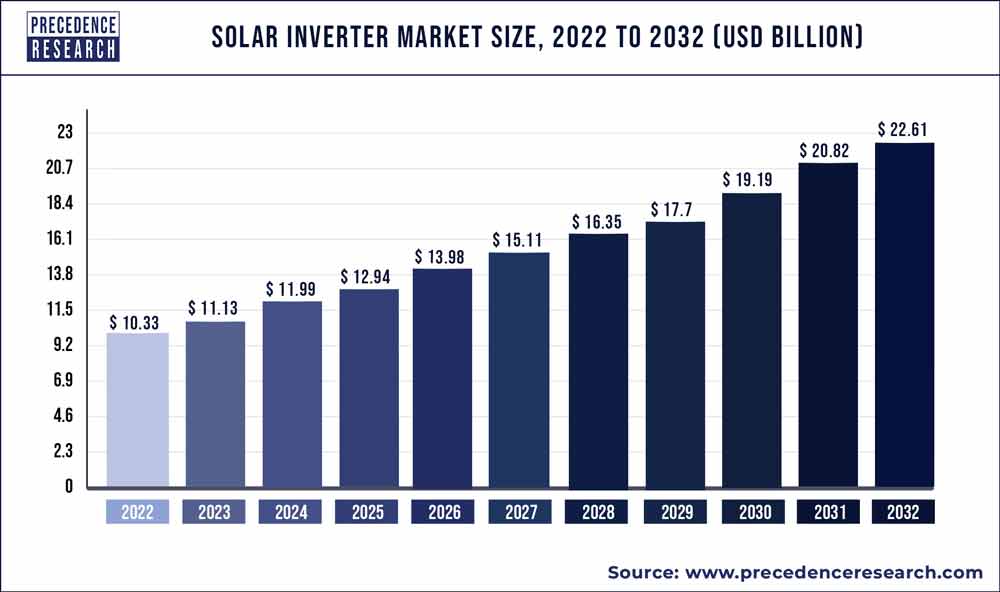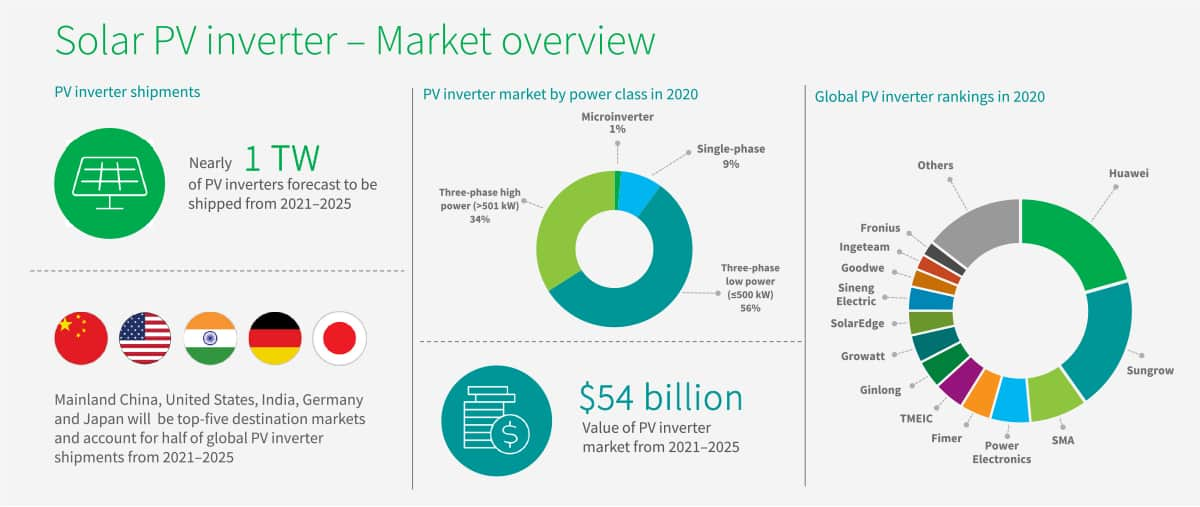Introduction
Inverters are electronic devices that convert direct current (DC) into alternating current (AC) and are essential components in a variety of industries such as renewable energy, automotive, and industrial. They are used in solar panels to convert DC generated from the sun into AC electricity that can be used by households, businesses, and the grid.

In the automotive industry, inverters are used in electric vehicles to convert DC power from the battery to AC power to drive the motor. In industrial settings, inverters are used to control the speed and torque of AC motors, making them more efficient and reducing energy consumption. The inverter market has experienced significant growth in recent years due to the increasing demand for renewable energy, the emergence of new technologies, and the rise in energy storage systems.
Market Trends
The inverter market has experienced significant growth in recent years due to several market trends. Firstly, there has been a growing demand for renewable energy, driven by concerns over climate change and the need to reduce greenhouse gas emissions. This has led to an increased adoption of solar panels, wind turbines, and other renewable energy sources, which in turn has increased the demand for inverters. Secondly, the increasing adoption of electric vehicles has also driven the demand for inverters. Inverters are an essential component of electric vehicles as they convert DC power from the battery to AC power to drive the motor. Thirdly, there has been an emergence of new inverter technologies, such as silicon carbide (SiC) and gallium nitride (GaN), which are more efficient and have higher power density than traditional silicon-based inverters. Fourthly, there has been a rising demand for energy storage systems, such as batteries, which are used to store excess energy generated by renewable energy sources and discharge it when needed. Inverters are used in these systems to convert DC power from the battery to AC power that can be used by households, businesses, and the grid. Lastly, the COVID-19 pandemic has had a significant impact on the inverter market, causing disruptions to global supply chains and leading to delays in project development.
III. Market Segmentation
The inverter market can be segmented by product type, application, and geography. By product type, the market can be classified into central, micro, and string inverters. Central inverters are used in large-scale solar power plants and have a capacity of over 100 kW. Microinverters are used in residential and small commercial applications and have a capacity of up to 300W. String inverters are used in medium to large-scale solar power plants and have a capacity of up to 100 kW. By application, the market can be classified into residential, commercial, and utility. Residential applications include small-scale solar panel installations for homes. Commercial applications include larger-scale installations for businesses, schools, and government buildings. Utility applications include large-scale solar power plants for supplying electricity to the grid. By geography, the market can be classified into North America, Europe, Asia-Pacific, and Rest of the World.

Competitive Landscape
The inverter market is highly competitive, with several key players dominating the market. Some of the key players in the market include SMA Solar Technology AG, ABB Ltd., Huawei Technologies Co. Ltd., Fronius International GmbH, and SolarEdge Technologies Inc. These companies account for a significant share of the market and are continuously innovating and developing new products to meet the evolving needs of the industry. Product innovations and developments include the use of new technologies such as SiC and GaN, as well as the development of more efficient and reliable inverters. Market share analysis reveals that SMA Solar Technology AG holds the largest share of the market, followed by ABB Ltd. and Huawei Technologies Co. Ltd.
Market Forecasts
The inverter market is expected to continue to grow in the coming years, driven by several factors. Firstly, the increasing adoption of renewable energy sources is expected to drive the demand for inverters. According to a report by the International Energy Agency, renewable energy is set to account for 90% of the increase in global power capacity by 2025. Secondly, the increasing adoption of electric vehicles is also expected to drive the demand for inverters. According to a report by BloombergNEF, electric vehicles are expected to account for 58% of new passenger car sales by 2040. Thirdly, the emergence of new inverter technologies such as SiC and GaN is expected to drive the demand for more efficient and reliable inverters. According to a report by MarketsandMarkets, the SiC and GaN power semiconductor market is expected to grow at a CAGR of 29.1% from 2020 to 2025. Lastly, the rising demand for energy storage systems is also expected to drive the demand for inverters. According to a report by Wood Mackenzie, the global energy storage market is expected to grow at a CAGR of 31% from 2021 to 2030.

Despite the growth opportunities, the inverter market also faces several challenges. Firstly, the high cost of inverters is a significant barrier to adoption, particularly in developing countries where the cost of electricity is low. Secondly, the lack of standardization in the industry can lead to compatibility issues and hinder the growth of the market. Thirdly, the availability of raw materials such as silicon carbide and gallium nitride can also be a challenge, as they are not widely available and are often expensive. Lastly, the COVID-19 pandemic continues to have an impact on the industry, causing disruptions to global supply chains and leading to delays in project development.
Conclusion
In conclusion, the inverter market has experienced significant growth in recent years, driven by several market trends such as the increasing adoption of renewable energy and electric vehicles, the emergence of new technologies, and the rising demand for energy storage systems. The market can be segmented by product type, application, and geography, and is highly competitive, with several key players dominating the market. The market is expected to continue to grow in the coming years, driven by the factors mentioned above, but also faces several challenges such as the high cost of inverters, lack of standardization, availability of raw materials, and the impact of the COVID-19 pandemic. Despite these challenges, the future outlook of the inverter market remains positive, with continued growth and innovation expected in the years to come.
See Also-
- Best Inverter Battery 2023
- Best Inverter Generator For RV 2023
- Best Power Inverter For Camping 2023
- Best Power Inverter For Car 2023
- Best Power Inverter For Home 2023
